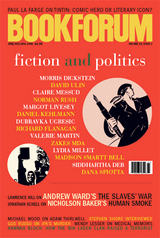
The protagonist of Harry, Revised, Mark Sarvas’s debut novel, is a Bel Air radiologist whose trappings (he drives a Jaguar and lives in a $2.8 million house) are in marked contrast to his bumbling, insecure nature. Paunchy and middle-aged, Harry Rent is a perennial avoider of confrontation—“he’s always found it easier to deny, to disavow, and to disengage”—which is the reason his eight-year marriage to the pretty, poised, and moneyed Anna Weldt has deteriorated into a state of benumbed complacency. When Anna dies during cosmetic surgery (she was having a her breasts augmented, in part to reinvigorate the marriage), Harry is forced to do some soul-searching. Drawn to a young diner waitress named Molly, he seizes on a plan to woo her by setting up her ragged, older coworker Lucille with podiatry and a new apartment, thus doing good by the world while achieving his own ends. His model in these actions is Alexandre Dumas’s Edmond Dantès, an identification inspired by the Monte Cristo sandwich Molly serves Harry on the day of Anna’s funeral.
If these elements seem mostly like the makings of a smart comedy, there are others—such as Harry’s addiction to sex with prostitutes, his repressed rage over Anna’s patronizing treatment of him (she likes things to be “cool and minimal” and makes him keep his personal items in the basement), his fraught relationship with her blue-blooded parents (“An X-ray practice?” Anna’s mother sneers about his profession)—that are more serious in tone. One senses that with the addition of these “problems,” Sarvas wants to complicate his main character, to give him more dimensions than a sitcom- or adventure-style hero has, but these somber passages mix oddly with the zanier moments, as when, for instance, Harry, spying on Lucille through her apartment window, is urinated on by an upstairs neighbor. They also seem at odds with emotional scenes that verge on melodrama: Tears “glitter” and characters “look at each other wordlessly.”
Sarvas, a critic who runs the literary blog the Elegant Variation, knows how to structure a story: He deftly withholds key information about Anna and Harry’s marriage, seamlessly alternates between past and present, and superbly maintains pacing. He also captures the way in which some of life’s most dramatic moments are shot through with banality, as when Harry is preparing to make a profound confession to Anna and sees “that mechanical pencil, still under the couch, where it rolled last summer. The chipped paint on Anna’s toenails. That her right big toe is slightly larger than her left.” Harry is a genuinely likable character in spite of his shortcomings, and the reader roots for him in his quest for enlightenment and transformation. If his story is pat in places, a bit lacking in the disquieting strangeness that makes for indelible rather than merely diverting fiction, Harry makes up for it with what the reader, like Anna, identifies as his “good heart.”
